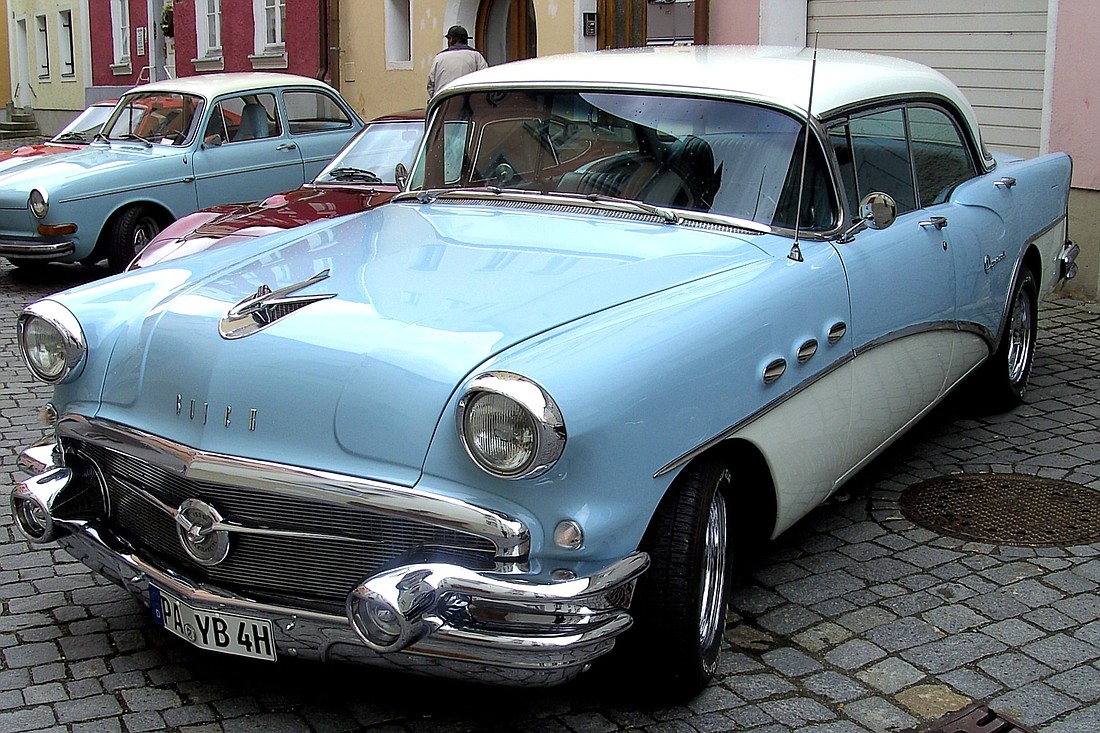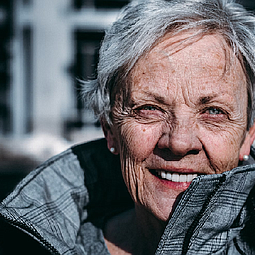Learning to Drive
April 4, 2015 at 8:07 a.m.
Learning to Drive
As a senior in high school, I came late to the art of driving. I was the third youngest in my class, so still relatively young: graduating at 17. My dad took on the task of teaching me, even though he was the type of driver Defensive Driving courses taught us to look out for. I didn't care; at least he was willing.
Our first lesson was on a weekend day when the local mill was closed. We went to one of the empty, company-owned parking lots behind the mill. I think he took me there for safety's sake. But since the lot was on a road not well traveled, it could have been so no one would see us. The lot was surrounded by a chain link fence, which was used more to delineate the area than for protection, since there were no gates at the entrances. The surface was covered with old, cracked asphalt, with grass poking through the wider openings. It seemed very large until he put me in the driver's seat and told me to take hold of the wheel and drive.
It sounds like a simple direction: But I had to steer the car and shift the gears as well. Oh, yes, I had to learn on a stick shift, where the car needed to roll in order to shift the gears. Oh, my God! I had no idea how hard it would be to step on the clutch, let up on the gas, and shift from first to second with one hand while trying to keep the other on the steering wheel—NOT hitting the fence in the process! Once in second, I had to do it all over again to get to third. We spent over an hour just circling the lot with the car stalling out, or sputt-sputt-sputtering along at maybe five miles an hour until I finally got the hang of it...kind of.
Once my dad felt confident in my gear shifting, he took me on the road. The area of Massachusetts in which we lived had lots of two-lane, tree lined back roads, and we covered most of them. When I first started driving, I kept the hood ornament in sight, which experienced drivers know is a "no-no." During this phase, there were a few times that I scared the st out of my dad. I remember once, when a car was coming toward us, I pulled over too far and almost went onto the dirt shoulder, which caused my dad to jump and then cringe. I finally got it: If I looked beyond the hood, I could steer the car more smoothly.
One of the hardest things to learn was starting up after stopping on a hill. My dad’s method was: step on the clutch and the brake, then quickly, yet smoothly, let the clutch in and ease up on the brake until the engine "catches," then take off. Of course, I first had to learn that stepping on the clutch pedal was "letting the clutch out" and letting up on the clutch pedal was "letting the clutch in." Once I got the concept regarding the clutch, we went to one of the steepest hills in town. At the stop sign, I tried to do what my dad had instructed. It didn't work, and I rolled back a few feet until I stepped on the brake but forgot to step on the c1utch—stalling the car. By then another car was behind me. I tried again. Didn't work...again...a few more feet backward. We waved the car around us. After several times, I finally got things right, and we took off. Eventually, I became quite expert at the technique.
Another great pointer my dad gave me was turning in the street. Just find an empty driveway, go in partway, then back into the street, facing the other direction, and you're on your merry way. Little did I know, until I took Driver's Ed a couple of times, that there is actually a legal way to change direction. It's called a three point, or "K," turn!
Oh, by the way, starting on a hill is best done by first setting the hand brake, then letting the clutch in while easing off the foot brake until the gears catch, then you release the hand brake and off you go. No back rolling necessary.
My mother eventually got involved in my driver education too. I had trouble backing up, so she took me to a sand pit and let me practice. It was a great place, kind of like the parking lot with lots of space to drive around in without hitting anything. Actually, it was more like a desert with a great big hill toward the back of the lot. I think the town used the sand in the winter to spray on the roads for traction when it snowed. Since it was spring, no one was around to interfere—or to see. With lots of practice, I finally understood that when backing up, I should turn the wheel in the same direction I want the car to go. That little tidbit of info was also helpful when trying to parallel park, which my mother also taught me how to do—with great patience.
My mother wasn't sure she wanted me to get my license before I graduated from high school. As the youngest, I don't think she wanted me to grow up too fast. However, I convinced her with the fact that car insurance would be less if I got my license through Driver's Ed before graduation. My mother, part Scottish, and more importantly, the one who held the family's purse strings, was always ready to save money. She acquiesced.
On testing day, less than a week before graduation, four of us piled into the Driver's Ed vehicle, two students in the back, one at the wheel and the examiner in the passenger seat. (It's funny, but at 65, while working for Chevron on a construction site in Kenai, Alaska, the instructor of a defensive driving course used the same configuration. It brought back the same feeling of nervousness that I had that day at 17.)
We left the High School parking lot and turned into the road that fronted the school. The first corner we had to negotiate was at a “T” intersection. The road we were on was the top, and I had to turn right onto the shaft. That was where I made my first, and thankfully only, mistake: I rounded that corner in third! The instructor "suggested" that it would be better to downshift when turning corners. In retrospect, considering possible consequences, it was ironic that a funeral home occupied the corner on the right and a convent was on the left.
Farther on, I changed directions in the street and stopped and started on a hill. Because I had taken the Driver's Ed classes, I performed those two maneuvers the correct way instead of my father's way. So, despite the one mistake at the corner, I got my license on the first try.
In Massachusetts, licenses indicated whether they were for automatic or manual vehicles. If your license was for an automatic, you could only drive automatics. If the license was for a stick shift, you could drive either type of car. I was glad that our car was a stick shift, because I learned the more difficult skill and would never have to take another driver exam.
From the beginning, I loved to drive. It satisfied my wanderlust...at least to some extent. Throughout my life I drove uncounted miles and had many adventures. Some were good, like driving from Massachusetts to Fort Bragg, North Carolina in 1966 to ask my boyfriend how serious our relationship was. We were married a week later. Some not so good, like driving through town singing songs with our youngest and being stopped for speeding. I cried and got out of the ticket, though. Regardless of what kind of adventure I experienced, I was always ready for more.
Sheila Hansen moved to Seattle in 1995 and spends time volunteering.
SHARING STORIES is a weekly column for and about the 50 plus crowd living in the Puget Sound region. Send your stories and photos to ariele@comcast.net. Tell local or personal stories; discuss concerns around aging and other issues; share solutions, good luck, and reasons to celebrate; poems are fine too. Pieces may be edited or excerpted. We reserve the right to select among pieces. Photos are always a plus and a one-sentence bio is requested (where you live, maybe age or career, retired status, etc.). SHARING STORIES is featured on www.northwestprimetime.com, the website for Northwest Prime Time, a monthly publication for baby boomers, seniors, retirees, and those contemplating retirement. The newspaper can be found in the greater Seattle area and other Puget Sound locations. For more information, call 206-824-8600 or visit www.northwestprimetime.com. To find other SHARING STORIES articles on this website type "sharing stories" in the search function above.





